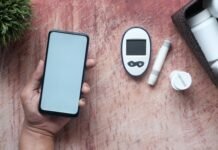Orthopedic surgeons treat everything from spinal deformities to flat feet. Each operation is complex because they perform surgery on your bones and the surrounding tendons, muscles, and ligaments. Recovery can be painful and require a lot of physical therapy. You also may have to recover for a few weeks without working, driving, or doing any strenuous activities. However, new orthopedic surgery innovations have led to reduced pain and quicker recovery times in recent years.
Ortho-Biologics
Ortho-biologics include a wide range of biologically based components used in surgery. This includes bone grafts, human growth factors, autologous blood or serum, and platelet-infused plasma. These are derived from human cells, tapping into their regenerative properties. Your bodies are less likely to reject human biologics. The result is fewer complications and faster healing times.
Minimally Invasive Orthopedic Surgery
For decades, orthopedic surgery involved opening up the affected area with one long incision then moving all the muscles, tendons, and ligaments out of the way to gain access to the bones. The result was a large, painful scar, a high risk of infection, and much-needed recovery time because the muscles and ligaments had been moved about so much.
More surgeons are turning to minimally invasive surgery options that use a few small incisions rather than one large one. Typically, the surgeon will work around the muscles and tendons rather than just shoving them out of the way. It’s a complex procedure, but the reduced recovery time and high success rates guarantee more patients will turn to minimally invasive surgery every year. A prime example is the minimally invasive bunion surgery performed at facilities like Northwest Surgery Center. Bunion surgery is notorious for pain and long recovery times and usually requires implanted metal plates or screws. The minimally invasive alternative doesn’t use any hardware and has outstanding results in much less time.
Smart Sensors
Surgeons are increasingly using smart devices to monitor post-operative patients. The sensors track patients in real-time, monitoring their vitals and the condition of the incisions. This helps minimize infections, particularly in patients with prosthetics.
3D Printing
Although you might think of 3D printing as making action figures and other small items, medical-grade 3D printers can print three-dimensional, fully functional products for surgery. This includes plates, screws, orthotic prostheses, and medical-grade surgical implements. These devices are precision-engineered and custom-designed to meet each patient’s individual needs and physical makeup.
Orthopedic surgery is advancing at a rapid pace. It’s encouraging to know that there are innovations that will make surgery a safe and successful solution if you’re facing the prospect of orthopedic surgery.





Can you be more specific about the content of your article? After reading it, I still have some doubts. Hope you can help me. https://www.binance.com/join?ref=P9L9FQKY